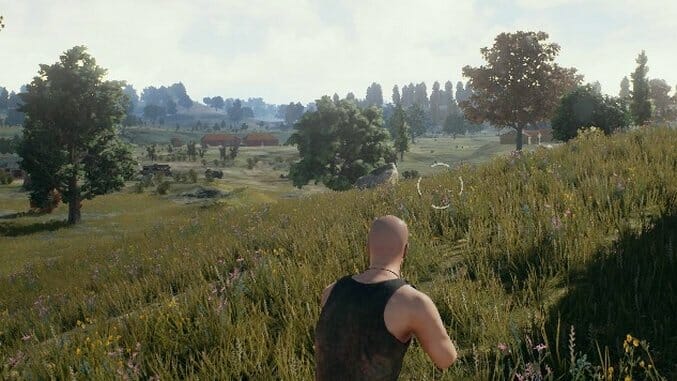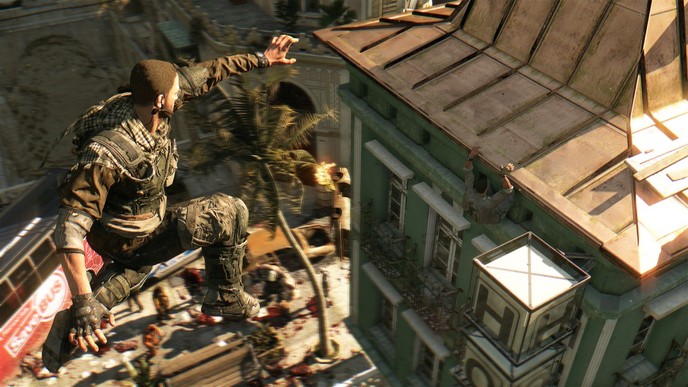The Sacrifices That Playerunknown’s Battlegrounds and Dying Light‘s Developers Made During Optimization
Games Features game design
Optimizing a game for performance is a difficult task. Developers want to see as much of their vision as possible in the final product. At the same time, that product needs to run as efficiently as possible, meaning that things need to operate smoothly at the recommended settings on all kinds of hardware—from top-of-the-line gaming rigs to bottom-of-the-shelf laptops.
“It’s a crucial part of making a game—and sometimes it can make or break a feature,” said Dying Light producer Tymon Smektala. “It’s usually easy to have something working perfectly on a very powerful PC, but it really gets tricky when you have to squeeze it on lower-end computer or fit into an install chunk of a console version.”
Optimization is a key reason that big parts of the developers’ vision might not make the final cut. When a planned feature pushes the hardware too far or doesn’t run efficiently enough, developers are forced to make sacrifices and take risks in order to make as much of their original plan come to life as possible.
Sometimes even a game’s core mechanic can be too complicated to run effectively on the hardware it was planned for. That was the case for Techland’s Dying Light, the first person survival horror adventure where you use parkour to escape a zombie horde and navigate the world. Unfortunately, that parkour mechanic the game centered around wasn’t running correctly on the PS3 and Xbox 360.
“We started the project aiming for a cross-gen title, and it really was a headache to squeeze it in on the last-gen,” Smektala said. “We had to look at obvious things from size of the maps to number of active AIs on the screen, but even our natural movement algorithms, the ones that we use to calculate our parkour movement, weren’t able to run fully.”
Right off the bat, the parkour system that made Dying Light stand out from other survival horror games wouldn’t run without a major overhaul. “If the geometry was too complex then these algorithms led to lost frames and loss of fluidity,” Smektala said. “The plan was to either optimize the code until it was good enough or work with a simpler geometry in last-gen versions.”
Instead of trying to completely redo the system that their game depended on, Smektala and his team decided to make the jump to the next generation of platforms, the Playstation 4 and Xbox One. “We made a gamble to focus on the next generation of platforms, even when no one knew that they will sell so well,” Smektala said. “Luckily, it was a gamble that paid off and it allowed us to keep much of our originally planned content.”
If Techland hadn’t made the decision to jump to the next generation of consoles, Dying Light may have been very different from the game we know today. The parkour mechanic would have needed to be far simpler in order to run on the Playstation 3 and Xbox 360, but Smektala and his team were fortunate to have the opportunity to make the jump to more capable hardware— an option that many developers don’t have.
Bluehole Studios, the team behind the popular PlayerUnknown Battlegrounds, didn’t have the choice to jump to unproven and more powerful hardware. They faced the huge challenge of optimizing a game that was trying to be a tense multiplayer shooter with an immersive open world, two features that don’t mix well often.
“There were so many features that we had to give up, I don’t even know where to start,” said Joonhyuk Choi, lead designer of the game design team at Bluehole Studios. “We had to let go things related to rendering, physics and replication that would have allowed the battle to be more realistic but our engine couldn’t handle it.”
Choi and team made a lot of sacrifices to make an ambitious sandbox shooter like PUBG run smoothly. They scrapped the idea of giving players a more detailed scope sight and limited foliage rendering to a certain distance. “The game renders trees, rocks and bushes for up to one kilometer, which would be considered as the effective range of gunplay on a minimum PC spec,” Choi said. “But to render grass that far away is taxing so we decided against it.”
The team later found out that there was a disconnect caused by their choice to not render some of those obstacles in the distance. Players could still be seen from afar, even when they thought they were hidden by rocks, trees or grass. It gave snipers a decisive advantage over players moving in an open field and made the world they created feel cheap.
“It’s something that needs to be fixed since it affects fair gameplay,” Choi said.
Limiting the amount of grass and foliage is a common tactic for open world developers. If they chose to render all the grass in a field PCs would crash left and right. But the advantage that missing grass provides to some players during ranged gun fights can’t be ignored in a multiplayer shooter.
“We’re developing a feature that allows a concealed character behind foliage to be unseen even when the foliage is not rendered,” Choi said. “It allows players to be hidden behind foliage even though it isn’t completely rendered, taking into account size and height of unrendered elements.”
While the solution isn’t perfect, since players prefer being able to possibly see bits of the player through a bush in the distance, it does succeed in bringing some fairness back to ranged gunfights in open fields. This example is one of many sacrifices that Choi and his team have made to make PUBG what it is today, and it’s a process we’ll continue to witness while the game remains in early access.
Many of the decisions that developers at Techland and Bluehole made were limited by how they would affect the game’s performance. That’s one of the biggest challenges of development. Optimization isn’t something that developers work to by cleaning things up during the last stretch of development—it’s something that affects nearly every decision along the way to a final product. In many cases, making sure a game runs smoothly is a bigger priority than making a title rich in features.
Performance goals often keep developers grounded by giving them limitations, pushing teams to prioritize what they really want to do. “We had to give up dozens of features for the sake of maintaining stability of core gameplay experience, which is what players expect,” Choi said. “Player expectation can never be an afterthought, it’s something that developers have to prioritize over their own vision for a game.”
